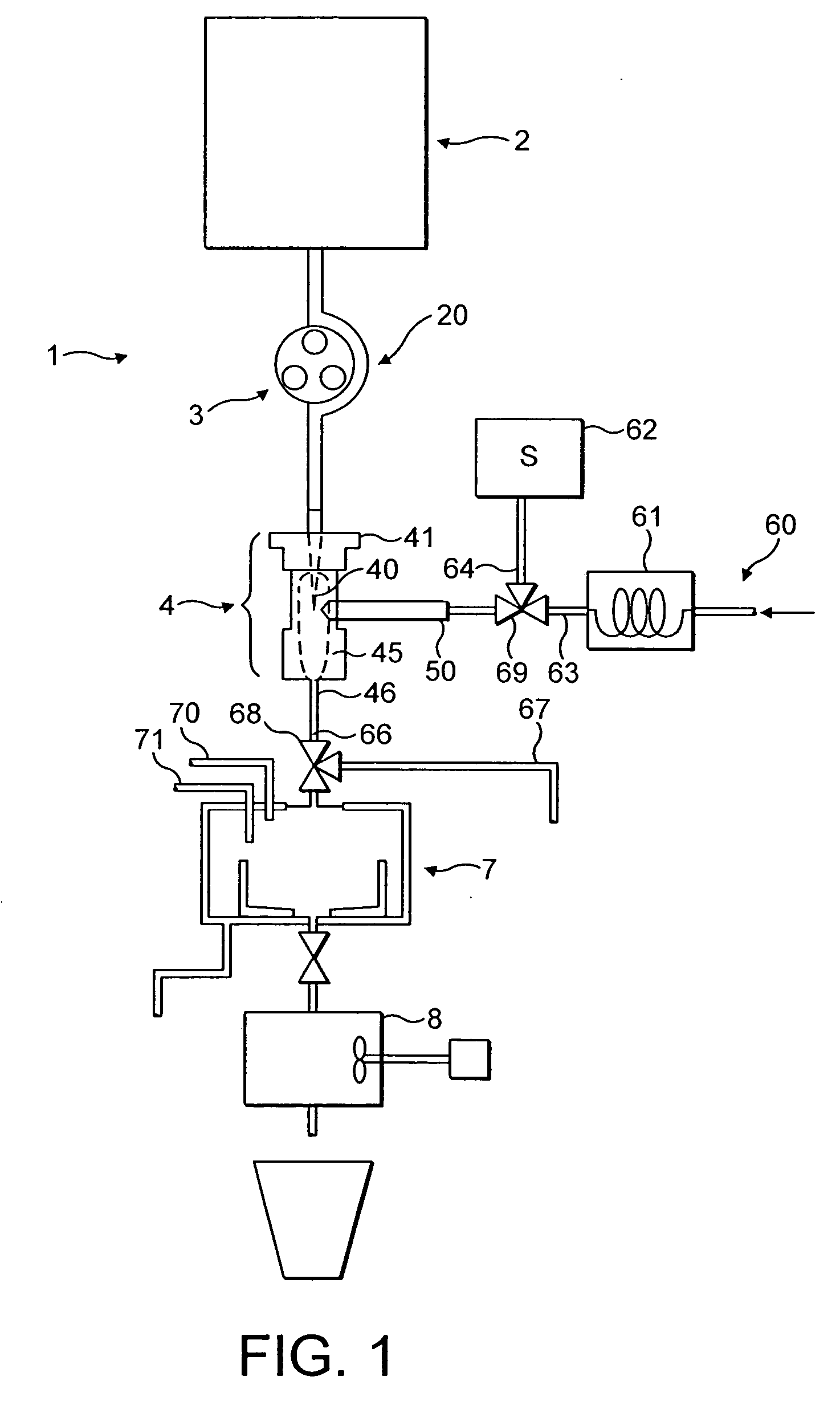Device and method for hygienically delivering a liquid food
a technology of liquid food and hygienic delivery, which is applied in the direction of liquid handling, combustion types, instruments, etc., can solve the problems of difficult to achieve dose-to-dose accuracy, difficult to dilution in tepid or cold water, and blockage of dosing devices, etc., so as to achieve easy production, easy to dilution on-demand, and easy to dilution without significant environmental risk
- Summary
- Abstract
- Description
- Claims
- Application Information
AI Technical Summary
Benefits of technology
Problems solved by technology
Method used
Image
Examples
Embodiment Construction
[0027] In one preferred of the invention, a cleaning chamber is provided. The chamber comprises a passage for the elongated liquid delivery member to be inserted therein with the outlet of the elongated liquid delivery member being maintained at distance from the inside surfaces of the chamber. The chamber also comprises at least one outlet configured for dispensing the liquid food to or from the dispenser. Thus, the chamber maintains a confined area under cleaning and / or sanitizing control. The chamber also prevents splashing of liquid food outside of the dispenser and / or on surfaces of the dispenser that cannot be automatically cleaned or rinsed. The same water used for cleaning can be blended with a liquid food in a final preparation.
[0028] The outlet of the chamber enables to funnel the liquid food into components of the dispenser such as a dispensing or mixing conduit, a mixing bowl, a whipper or, alternatively, into the beverage or food container directly.
[0029] In another a...
PUM
 Login to View More
Login to View More Abstract
Description
Claims
Application Information
 Login to View More
Login to View More - R&D
- Intellectual Property
- Life Sciences
- Materials
- Tech Scout
- Unparalleled Data Quality
- Higher Quality Content
- 60% Fewer Hallucinations
Browse by: Latest US Patents, China's latest patents, Technical Efficacy Thesaurus, Application Domain, Technology Topic, Popular Technical Reports.
© 2025 PatSnap. All rights reserved.Legal|Privacy policy|Modern Slavery Act Transparency Statement|Sitemap|About US| Contact US: help@patsnap.com



